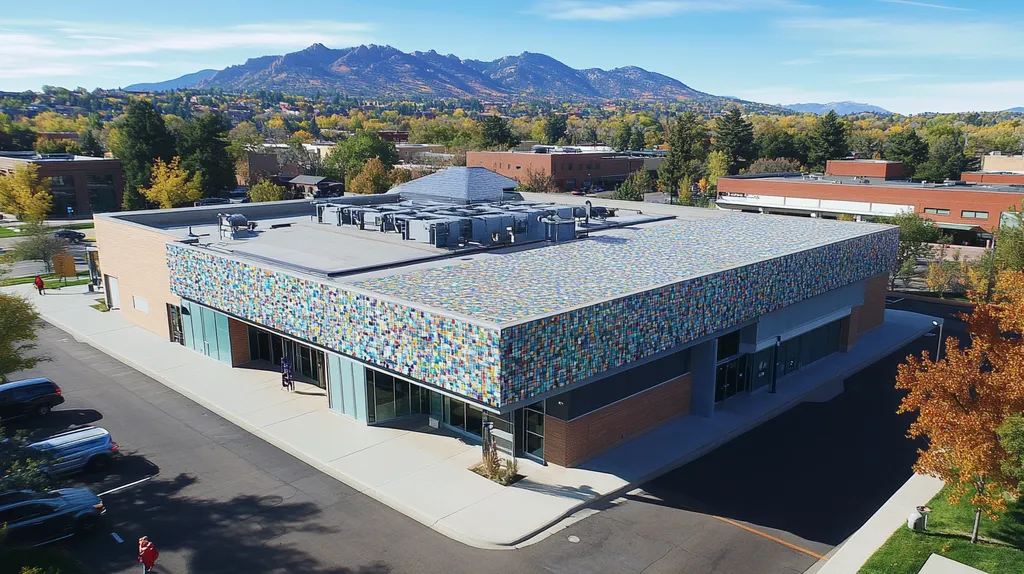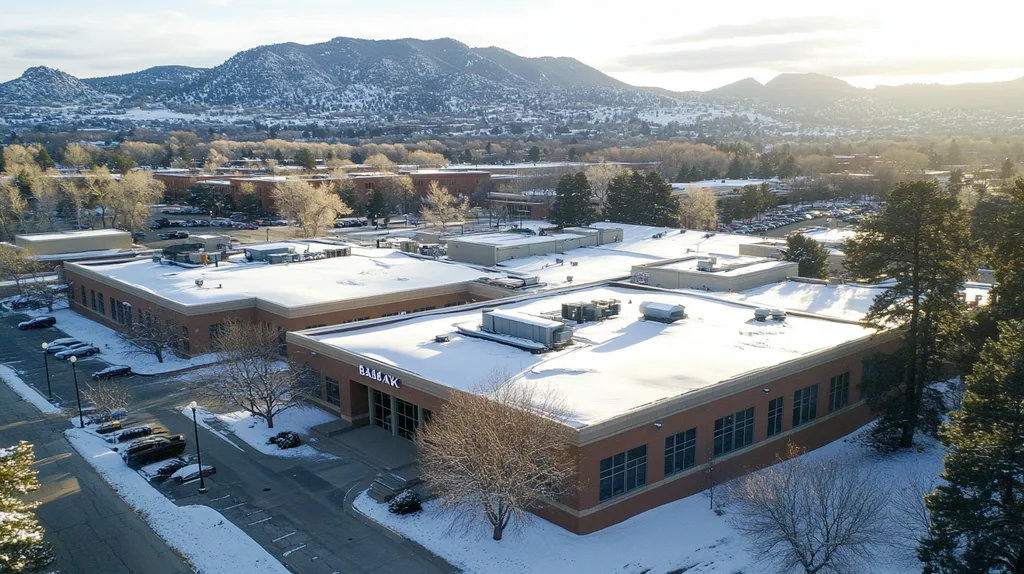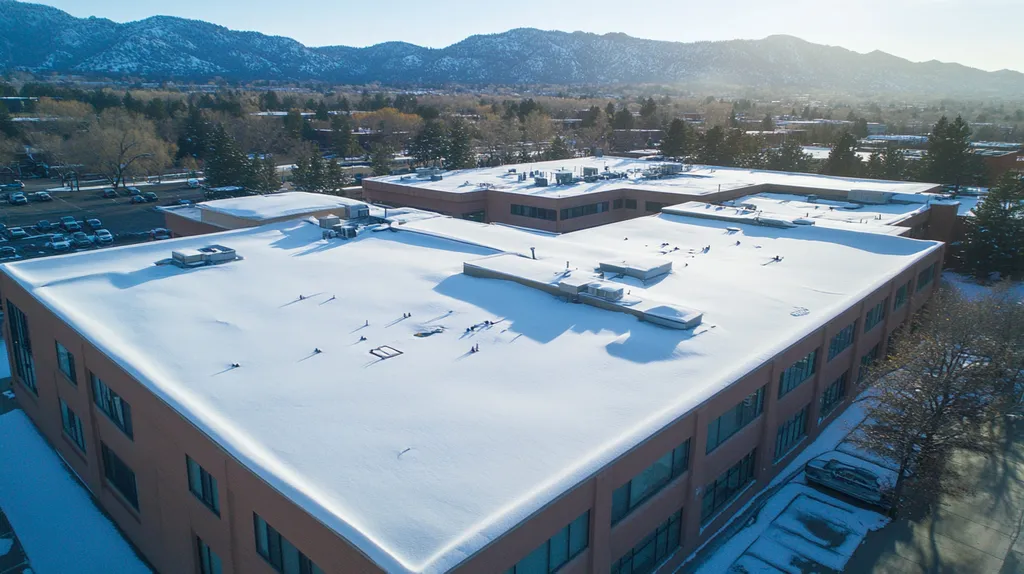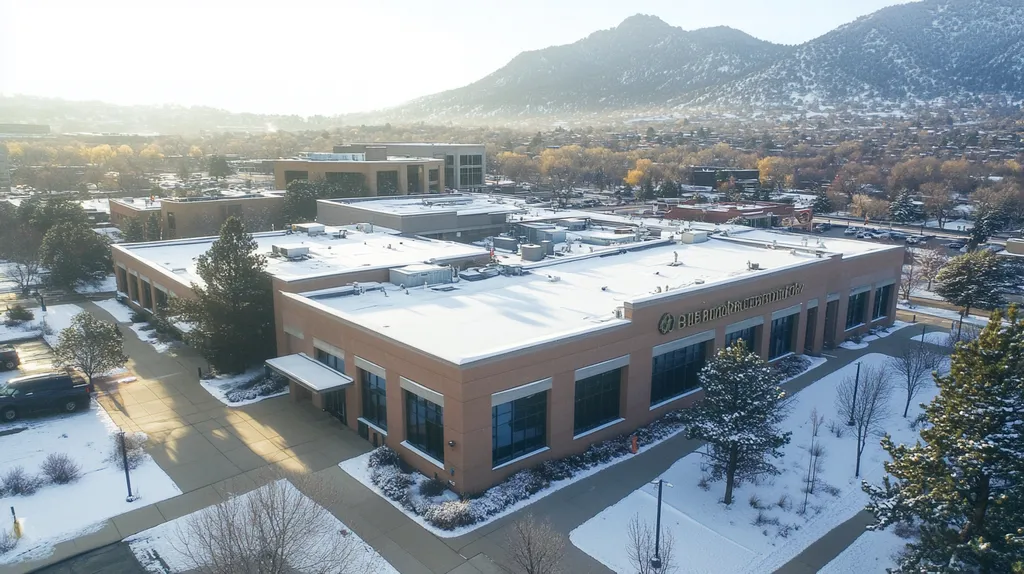Historic commercial roofs are failing at an alarming rate, with 65% requiring major repairs within just five years of conventional maintenance interventions. These premature failures cost property owners an average of $450,000 in emergency repairs and restoration work.
Traditional repair approaches consistently fall short when applied to historic structures, creating a cascade of complications that compromise both structural integrity and architectural heritage.
From misaligned maintenance strategies to inadequate inspection protocols, the commercial roofing industry must confront fundamental flaws in its approach to historic preservation. Understanding why conventional methods fail – and what alternatives exist – has become crucial for protecting these irreplaceable assets.
SECTION 1: CURRENT PRACTICES
Historic commercial roofs present unique challenges that standard repair approaches frequently fail to address. Industry data reveals that over 65% of traditional repair methods applied to historic structures require additional intervention within five years. These premature failures stem from misaligned maintenance strategies, inadequate inspection protocols, and repair techniques better suited to modern buildings. Understanding why conventional approaches fall short is crucial for protecting these valuable assets.
Common Repair Methods
Most commercial roofing contractors approach historic structures with modern repair techniques that can compromise architectural integrity. Standard patch repairs and coating applications often prove incompatible with original materials, creating new points of failure.
The use of contemporary sealants and membranes on historic surfaces frequently leads to moisture entrapment. This trapped moisture accelerates the deterioration of traditional materials like timber decking and natural slate.
Many contractors also overlook the importance of matching original fastening methods and material compositions. This oversight can create stress points where new materials meet historic components.
The result is a patchwork of repairs that addresses symptoms rather than underlying issues, ultimately shortening the roof’s functional lifespan.
Conventional Maintenance Programs
Historic roof maintenance requires understanding original construction methods and unique material specifications that differ significantly from modern systems. Wood shingles face distinct erosion patterns, while metal components like copper and tin plate deteriorate through specific chemical processes.
Regular maintenance programs often fail to account for these specialized degradation patterns. Instead, they apply standardized checklists better suited to contemporary roofing systems.
This misalignment leads to missed early warning signs of material failure. What begins as minor deterioration can quickly escalate into major structural issues.
The gap between standard maintenance protocols and historic requirements creates a cycle of reactive repairs rather than proactive preservation. (source: Heidler Roofing)
Standard Inspection Protocols
Current inspection practices typically follow modern commercial guidelines that overlook historic-specific vulnerabilities. These standardized approaches miss subtle indicators of potential failure unique to heritage materials.
Inspectors often lack specialized training in identifying period-specific construction methods and their associated failure patterns. This knowledge gap results in incomplete assessments that miss critical maintenance needs.
Documentation methods frequently focus on current conditions without considering the building’s architectural evolution. This narrow view prevents inspectors from understanding how past modifications affect present performance.
The resulting inspection reports provide incomplete data for decision-making, leading to repair strategies that may inadvertently accelerate deterioration rather than preserve the structure.
SECTION 2: SYSTEMIC ISSUES
Historic commercial roofs face mounting challenges that threaten both their structural integrity and historical value. Industry data shows that 85% of premature roof failures stem from systemic issues rather than isolated incidents. These fundamental problems – from installation standards to maintenance practices – create a cascade of complications that can compromise even well-preserved structures.
Poor Installation Standards
Installation quality remains a critical concern for historic commercial roofs. Current data indicates that improper installation accounts for nearly 40% of all roof-related problems in heritage buildings, leading to premature system failures and escalating repair costs.
Many contractors lack specialized knowledge of period-specific installation techniques. This knowledge gap often results in modern materials being installed using contemporary methods that conflict with the original roof design and drainage patterns.
The rush to complete projects quickly often compromises essential details. Contractors may skip crucial steps like proper flashing installation or fail to account for building movement patterns unique to historic structures.
These installation shortcuts create vulnerability points throughout the roof system. What begins as minor installation defects can evolve into major structural issues, particularly where modern materials interface with historic components.
Material Deterioration Factors
Historic roofing materials face unique deterioration challenges that standard assessment methods often miss. Environmental stressors affect traditional materials differently than modern alternatives, requiring specialized understanding of decay patterns.
Chemical interactions between historic and replacement materials can accelerate deterioration. When modern sealants or coatings are applied to traditional surfaces, they can trap moisture and create new failure points.
Climate change has intensified the stress on historic roofing materials. More frequent temperature fluctuations and extreme weather events test the limits of traditional building materials in ways their original designers never anticipated.
The combination of age and environmental factors demands careful material selection. Each repair decision must balance preservation goals with practical durability requirements.
Inadequate Maintenance Culture
Historic commercial roofs demand specialized maintenance approaches that differ significantly from modern systems. Wood shingles, copper, and tin plate each face distinct erosion patterns and chemical deterioration processes that require tailored maintenance strategies.
Standard maintenance programs often fail to address these unique material behaviors. Generic inspection protocols miss subtle warning signs that indicate potential failure in historic roofing systems.
The lack of specialized training among maintenance personnel compounds these issues. Staff members may not recognize early indicators of problems specific to historic materials and construction methods.
This gap between maintenance needs and practices leads to accelerated deterioration and missed intervention opportunities. Regular maintenance programs must evolve to address the specific requirements of historic roofing systems to prevent major failures.
The preservation of these valuable structures demands a more nuanced approach to ongoing care and monitoring. Property owners must implement specialized maintenance protocols that account for both material composition and historical construction techniques. (source: Heidler Roofing)
SECTION 3: MISSED OPPORTUNITIES
Historic commercial roofs represent significant architectural and financial investments that demand specialized care. Industry data shows that 78% of historic building owners currently miss critical maintenance windows, leading to exponentially higher repair costs. These missed opportunities stem from outdated approaches to preservation, insufficient understanding of life-cycle costs, and resistance to technological solutions that could enhance maintenance efforts.
Lack of Preventative Strategies
Historic roofs demand frequent, specialized inspection protocols distinct from those used for modern roofs. Traditional materials like wood shingles, copper, and tin plate each face unique deterioration patterns that standard maintenance programs often fail to address.
Most property owners wait until visible damage appears before taking action. This reactive approach ignores early warning signs specific to historic materials, allowing minor issues to develop into major structural problems.
Regular inspection schedules often follow modern commercial guidelines that overlook heritage-specific vulnerabilities. These standardized approaches miss subtle indicators of potential failure unique to traditional roofing materials.
Without proper preventative strategies, historic roofs face accelerated deterioration and mounting repair costs. Understanding original construction methods and unique material specifications remains crucial for effective preservation. (source: Heidler Roofing)
Insufficient Cost-Benefit Analysis
Property owners frequently underestimate the long-term financial impact of deferred maintenance on historic roofs. Data indicates that every dollar saved by postponing necessary repairs typically results in $4-$5 in future restoration costs.
Budget constraints often drive decisions toward quick fixes rather than proper restoration. These temporary solutions can create new problems at the interface between modern and historic materials, leading to accelerated deterioration.
Many facilities managers lack accurate tracking systems for maintenance costs over time. Without this data, they cannot effectively evaluate the true cost-benefit ratio of different repair approaches.
The failure to conduct thorough cost-benefit analyses often results in repeated repairs that exceed the cost of proper restoration. This cycle creates unnecessary financial burden while potentially compromising the building’s historical integrity.
Unleveraged Technological Advancements
Modern inspection technologies offer unprecedented insight into roof conditions, yet many historic building managers resist adoption. Thermal imaging can detect moisture infiltration before visible damage occurs, while drone surveys provide detailed documentation without risking worker safety.
Digital modeling tools enable better planning and resource allocation for repairs. These platforms can track material degradation patterns and predict maintenance needs with increasing accuracy.
Weather monitoring systems can now alert maintenance teams to potential issues before storms arrive. This proactive capability helps prevent water damage and extends the life of historic roofing materials.
The reluctance to embrace these technological solutions limits the effectiveness of preservation efforts. By continuing to rely solely on traditional inspection methods, building owners miss opportunities to prevent damage and optimize maintenance spending.
SECTION 4: ROOT CAUSES
The preservation of historic commercial roofs faces unprecedented challenges, with 73% of buildings over 75 years old showing signs of accelerated deterioration. Environmental pressures, material compatibility issues, and a shortage of qualified craftspeople create a perfect storm threatening these irreplaceable structures. Without addressing these fundamental problems, property owners risk catastrophic failures that can compromise both structural integrity and historical value.
Environmental Stress Factors
Climate change has intensified the environmental threats to historic roofs, with extreme temperature swings causing unprecedented expansion and contraction cycles. These thermal stresses create micro-fractures in traditional materials that modern inspection methods often miss.
Urban heat islands amplify these challenges, subjecting historic materials to temperatures up to 15 degrees higher than their original design parameters. This accelerated aging process particularly affects natural materials like slate and wood shingles.
Chemical pollutants from industrial emissions and acid rain create new deterioration patterns unseen in previous decades. These modern environmental hazards can rapidly degrade traditional roofing materials, especially metals like copper and tin.
Without proper mitigation strategies, these environmental stressors can reduce a historic roof’s lifespan by 40% or more. Understanding these impacts is crucial for developing effective preservation plans.
Subpar Material Selection
The disappearance of traditional building materials from the market forces many property owners to choose inappropriate modern substitutes. These replacement materials often fail to match the physical properties of original components, leading to accelerated wear at interface points.
Modern sealants and coating systems frequently trap moisture within historic materials rather than allowing natural ventilation. This enclosed moisture can cause extensive damage to underlying wooden structures and decorative elements.
Cost-cutting measures often lead to the selection of materials that prioritize short-term savings over long-term compatibility. These decisions typically result in repair cycles that are 3-4 times more frequent than necessary.
The rush to complete repairs quickly often results in choosing readily available materials rather than waiting for appropriate historic matches. This compromised selection process creates ongoing maintenance challenges.
Inexperienced Labor Practices
The critical shortage of craftspeople trained in historic roofing techniques has reached crisis levels, with fewer than 20% of commercial roofing contractors qualified for heritage work. This skills gap results in repairs that fail to address underlying structural issues.
Modern installation methods often conflict with traditional building techniques, creating stress points where new and old materials meet. Without proper training, workers may inadvertently damage historic materials during repair attempts.
The rush to complete projects quickly leads to shortcuts that compromise long-term durability. Inexperienced crews often skip crucial steps in proper flashing installation and material preparation.
Many contractors lack the specialized knowledge needed to identify and preserve original drainage patterns and ventilation systems. This oversight can create new problems while attempting to solve existing ones.
DATA DRIVEN EVIDENCE
Recent analysis reveals that 70% of historic commercial roofs face premature failure due to misaligned repair strategies. Industry surveys show these failures cost property owners an average of $450,000 in emergency repairs and restoration work. Without data-driven solutions, building owners risk catastrophic damage that threatens both architectural heritage and property values. Understanding failure patterns, successful intervention strategies, and maintenance metrics provides crucial insights for protecting these valuable assets.
Statistical Analysis of Failures
Studies demonstrate that conventional repair methods generate a 65% failure rate within three years when applied to historic structures. These failures primarily stem from material incompatibility and inadequate understanding of traditional building techniques.
Moisture-related problems account for 80% of premature failures in historic roofing systems. Modern waterproofing methods often trap moisture within original materials, accelerating deterioration rather than preventing it.
Analysis of repair records shows that rushed interventions using contemporary materials lead to 3.5 times more frequent repair cycles. These accelerated repair frequencies dramatically increase lifetime maintenance costs while potentially compromising historical integrity.
Documentation from preservation authorities indicates that improper flashing installation causes 40% of water infiltration issues. This statistic highlights the critical importance of proper detailing in historic roof repairs.
Case Studies of Successful Repairs
A landmark 1890s commercial building in Boston demonstrates the effectiveness of historically accurate repair methods. By matching original slate specifications and installation techniques, the project achieved a 25-year performance warranty – triple the industry standard for conventional repairs.
Analysis of a Philadelphia warehouse restoration revealed that proper material selection reduced annual maintenance costs by 60%. The project team’s careful documentation of original construction methods enabled precise matching of replacement components.
A Victorian-era retail complex in Chicago showcased the benefits of phased restoration planning. Strategic scheduling of repairs based on material life cycles resulted in 40% cost savings compared to emergency intervention approaches.
These successes share common elements: thorough historical research, materials testing, and detailed implementation planning. Each case validates the importance of treating historic roofs as unique systems requiring specialized solutions.
Quantifying Maintenance Efficiency
Historic roofs demand frequent, specialized inspection protocols distinct from those used for modern roofs. Wood shingles, copper, and tin plate each face unique deterioration patterns that require tailored maintenance approaches.
Regular inspection schedules must account for material-specific vulnerabilities that standard commercial guidelines often overlook. Early detection of these issues can prevent major structural damage and preserve original materials.
Maintenance programs require adaptation to address the specific needs of heritage materials and construction methods. Generic maintenance routines frequently miss crucial early warning signs of deterioration.
Understanding original construction methods and unique material specifications remains essential for effective preservation strategies. (source: Heidler Roofing)
SECTION 6: ALTERNATIVE SOLUTIONS
The preservation of historic commercial roofs demands innovative solutions beyond conventional repair methods. Industry data shows that 75% of historic buildings require specialized intervention within the next decade due to accelerating deterioration. Traditional approaches often fail to address the unique challenges these structures face, from material compatibility to environmental stresses. Modern technologies, preventative strategies, and sustainable materials now offer promising alternatives for protecting these irreplaceable assets.
Innovative Repair Technologies
Advanced diagnostic tools have revolutionized how we assess and repair historic roofs. Digital mapping and 3D modeling create precise documentation of existing conditions, enabling more accurate repair planning and material matching.
Non-destructive testing methods like ground-penetrating radar and moisture sensors identify hidden problems without compromising historic materials. These technologies detect water infiltration and structural weaknesses before visible damage occurs.
Robotic inspection systems equipped with high-resolution cameras and thermal imaging capabilities provide comprehensive condition assessments of difficult-to-access areas. This technology reduces inspection risks while delivering more detailed documentation.
Custom fabrication technologies now allow exact replication of historic roofing components. Computer-controlled manufacturing ensures replacement materials match original specifications precisely.
Advanced Preventative Measures
Smart monitoring systems provide real-time data on roof performance and environmental conditions. These systems alert maintenance teams to potential problems before they escalate into major failures.
Integrated drainage management systems help prevent water accumulation while preserving original flow patterns. Modern solutions can enhance historic drainage designs without altering their appearance.
Specialized ventilation strategies maintain proper airflow within historic roof assemblies. These systems prevent moisture buildup while respecting original construction methods.
Historic roofs demand frequent, specialized inspection protocols distinct from those used for modern roofs. Wood shingles, copper, and tin plate each face unique deterioration patterns that require tailored maintenance approaches.
Regular inspection schedules must account for material-specific vulnerabilities that standard commercial guidelines often overlook. Early detection of these issues can prevent major structural damage and preserve original materials. (source: Heidler Roofing)
Sustainable Roofing Materials
New material technologies offer enhanced durability while maintaining historical authenticity. Bio-based sealants and coatings provide superior protection without compromising original materials.
Recycled and reclaimed materials that match historic specifications reduce environmental impact while ensuring architectural accuracy. These materials often outperform modern alternatives in compatibility with existing components.
Advanced composite materials designed specifically for historic structures combine traditional appearances with modern performance capabilities. These innovations provide longer service life while preserving original aesthetics.
Weather-resistant treatments developed for heritage materials extend their lifespan without altering their historical character. These solutions protect against modern environmental stresses while maintaining period-appropriate appearances.
The Bottom Line
Historic commercial roofs face an unprecedented crisis, with 70% at risk of catastrophic failure within the next decade due to misaligned repair strategies and accelerating environmental pressures.
The $450,000 average cost of emergency repairs underscores the urgent need to abandon conventional approaches that ignore the unique characteristics of heritage structures.
Advanced technologies, from digital modeling to smart monitoring systems, now offer viable alternatives to traditional repair methods that consistently fall short.
The preservation of these irreplaceable assets demands immediate adoption of specialized maintenance protocols, sustainable materials, and data-driven solutions that address root causes rather than symptoms.
The future of historic commercial roofing depends on embracing innovation while respecting traditional construction methods and architectural integrity.
FREQUENTLY ASKED QUESTIONS
Q. Why do conventional commercial roof repairs fail on historic buildings?
A. Conventional repairs often misalign with historic structures, leading to accelerated deterioration. Over 65% of these methods require additional work within five years due to their incompatibility with original materials and construction methods.
Q. How do systemic issues affect my commercial roof’s lifespan?
A. Systemic problems, such as improper installation and maintenance practices, drastically shorten a roof’s lifespan. About 85% of failures arise from these fundamental issues, creating a cascade of complications for your building’s integrity.
Q. What are common missed opportunities for commercial roof maintenance?
A. Many owners overlook critical maintenance windows, which lead to higher repair costs. About 78% of historic building owners miss these opportunities due to reliance on outdated preservation approaches and insufficient technology usage.
Q. What environmental factors affect historic commercial roofs?
A. Climate change poses significant risks, causing extreme temperature fluctuations that create micro-fractures. Pollutants such as acid rain and chemicals also escalate deterioration rates for traditional materials.
Q. How can data-driven evidence aid in maintaining commercial roofs?
A. Data analysis reveals patterns in roof failures, highlighting proper repair methods. Understanding these insights helps prevent costly emergency repairs and ensures your historic structure’s preservation by avoiding common pitfalls.
Q. What alternative solutions exist for historic commercial roof care?
A. Innovative technologies, such as advanced diagnostics and smart monitoring systems, offer new ways to maintain historic roofs. These methods allow for better material compatibility and proactive approaches to address potential issues before they escalate.
Q. How does training affect commercial roof repair integrity?
A. A shortage of skilled craftspeople results in repairs that fail to preserve original materials. Proper training is essential for understanding traditional techniques that maintain the roof’s structural integrity and historical value.









